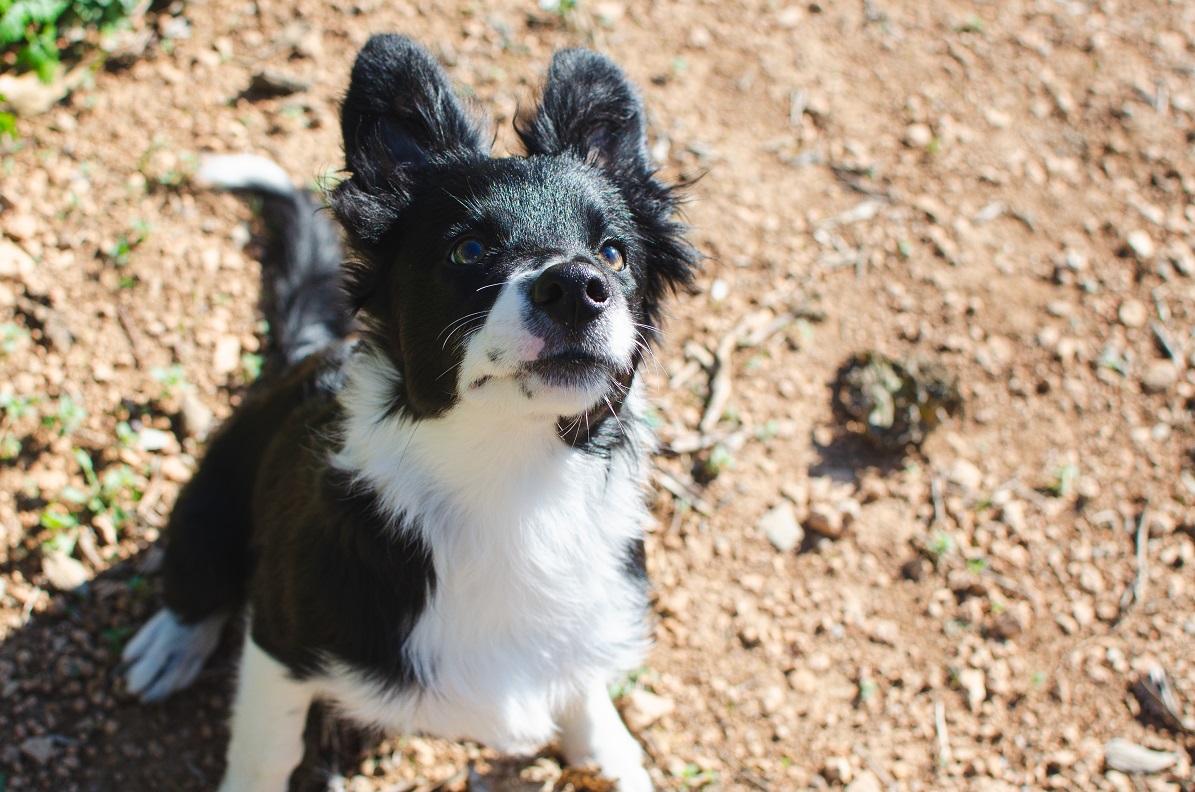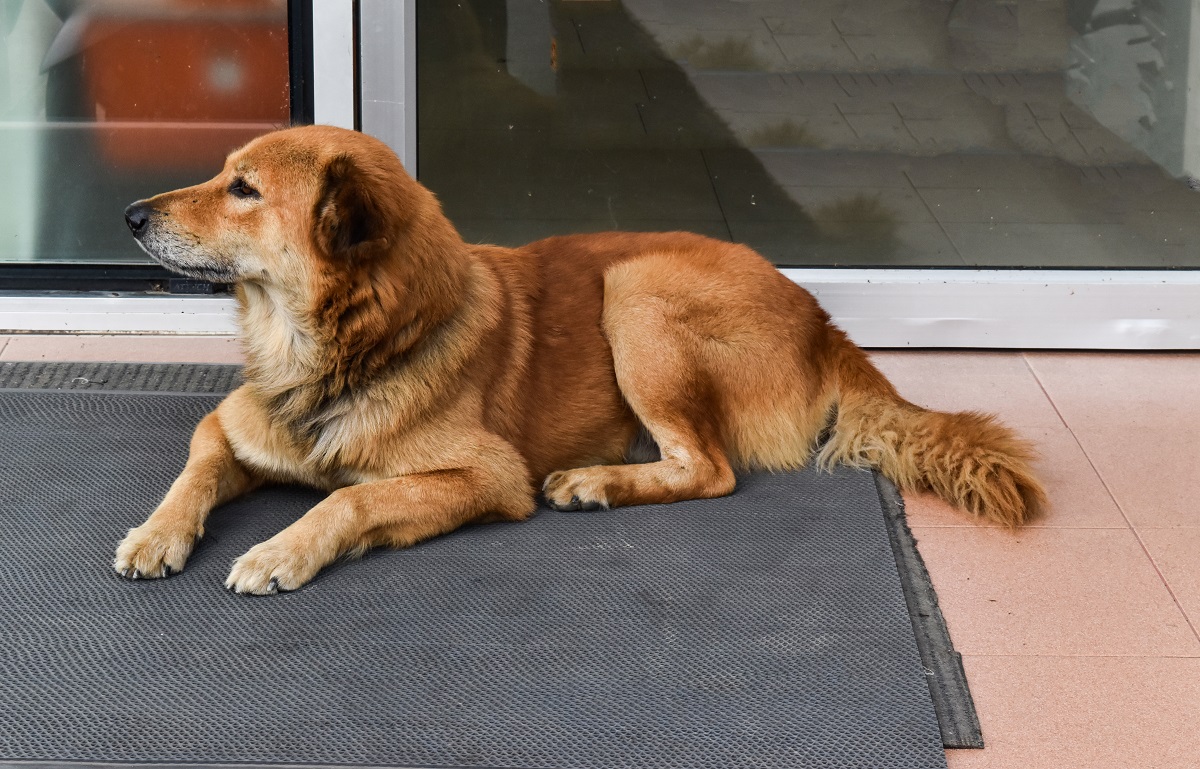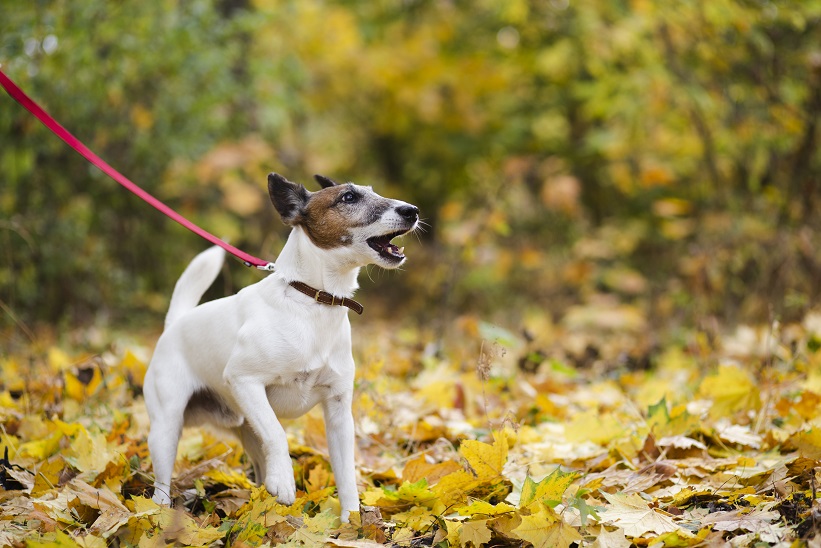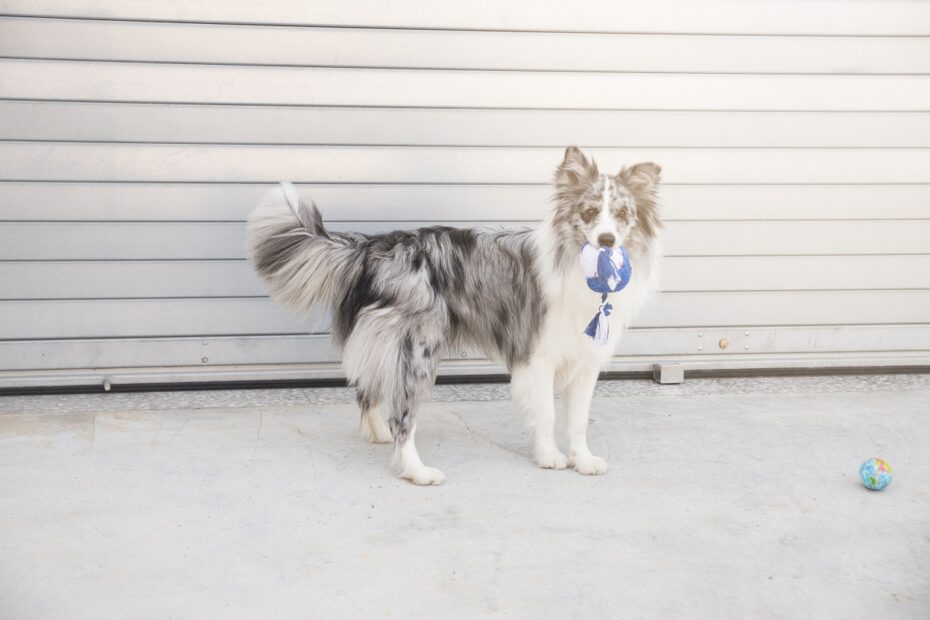If your dog won’t walk on the leash, they’re by no means the only one.
While you might think that most walking challenges involve over-eagerness, a surprising number of people experience the opposite problem…
…Namely, a dog that slams the brakes on as soon as the leash comes within sniffing distance.
Although it’s easy to dismiss the problem as stubbornness, there’s usually something more complex at work.
If your dog goes crazy each and every time you approach them with a leash, or if they refuse point blank to move while there’s one attached to their collar. You could be dealing with anything from the puppy blues to ingrained fear.
As with most things, understanding the root cause of the problem is the first step in addressing it.
The second step? …teaching your dog how to how to remain calm and control their emotions.
This is why before you do anything else, I’d highly recommend checking out the Dog Calming Code from Dan Abdelnoor over at The Online Dog Trainer. (see video below)
During the video, Dan goes into great detail about why most common dog training methods set you up to fail. Before revealing a few powerful calming techniques to make your dogs refusal to walk on the leash a thing of the past.
So watch the video, implement the training Dan Recommends, and you’ll see a huge improvement in your dog’s attitude towards the leash before you know it.
Here’s the link to take a look: Click Here To Discover How To Finally Get Your Dog To Walk On The Leash Again By Using A Powerful Training Technique That Takes Just Minutes A Day To Implement… Even If You’ve Tried & Failed Before!
(video will open in a new window)
Why Your Dog Won’t Walk on the leash
If your dog refuses to walk on a leash, there could be any one of a number of explanations to blame for their behavior.
Before jumping in with the solution, take a moment to take stock. Consider some of the following reasons.
Do any sound familiar?
Inexperience
Puppies are usually a blur of activity and motion… until the leash goes on for the first time.
Experiencing the pressure of the leash around their neck can be enough to make even the liveliest pup screech to a grinding halt.
Maybe they’re confused by what it is, or perhaps they don’t understand why they can’t run around freely anymore.
And until someone explains to them exactly what’s going on, they’re going to go on strike.
Trying to pull them with the leash is only going to confuse them even more.
The same applies to older dogs who’ve had no prior exposure to walking on the leash.
Maybe they’re a rescue dog who spent most of their previous life in the yard.
Maybe they were a street dog.
Either way, if the concept of a leash is something completely new to them, being lassoed by one is likely to leave them confused enough to slam on the brakes.
Fearfulness
Dogs that haven’t been properly socialized can become prone to fear and anxieties.
If they perceive the outside world to be a threat, they’re going to do everything in their power to avoid engaging with it.
The problem is particularly intensified during periods of change.
Maybe you’ve recently moved house, introduced a new member to the household, or simply changed the route you usually take during walks.
Whatever it is, if it’s new, confusing, and outside your dog’s limited experience of the world. They’re going to be feeling anxious, scared, and very, very keen to stay exactly where they are.
Related Post: Why Does My Dog Not Want To Walk All Of A Sudden

Negative Associations
If a dog has developed negative associations with a leash, then it’s little wonder they want nothing to do with it.
Jerking a dog around on the leash or not giving them time to acclimatize to it is asking for trouble.
Even if you’ve raised your dog since they were a puppy, they may still have bad memories around the leash.
Perhaps they associate it with going somewhere frightening like the vets, or maybe something bad happened when they were wearing one. Another dog attacked them, maybe.
Whatever the reason, the sight of the leash brings those memories flooding back.
Uncomfortable Leash
Not all leashes are created equal.
So if you thought investing in the sturdiest, most hardcore piece of kit you could find was the surest way of keeping your dog safe, you might unwittingly have created the problem.
If your dog is on the smaller side, that big, hefty leash is likely to feel like an anchor around their neck.
And if the leash is too heavy and too uncomfortable, few dogs are going to be inclined to go anywhere with it.
Injury/Medical Issues
If your dog’s been injured or is in pain, going for a walk is probably the last thing on earth they want to do.
Age-related aches and pains, certain cancers, hearing or sight problems… all of these can fill the prospect of a 20-minute walk around the park with doom.
Ending the Fun
Is your dog happy enough to walk on the leash on the way to the park?
Do they only dig in their heels when you try to leave?
If that’s the case, they’re probably having way too much fun where they are to even contemplate leaving.
Dog Won’t Walk On The Leash? Click Here To Discover How To Finally Get Your Dog To Walk On The Leash Again By Using A Powerful Training Technique That Takes Just Minutes A Day To Implement… Even If You’ve Tried & Failed Before!

How to Get Your Dog to Walk Calmly on the Leash
If your dog’s refusal to walk on the leash seems to have arisen out of the blue, it could signal an injury or a medical problem.
Before anything else, rule out the possibility that they’re in pain or discomfort by making an appointment with the vet.
If a problem is identified, they’ll work with you to discuss treatment and pain management options that should help overcome the problem.
If you’re given the all-clear, you can start moving forward with the following strategies.
Collar Refusal
Some dogs might stop in their tracks when you attach the leash. Others won’t even let you get that far.
So if your dog goes crazy when you so much as approach them with the leash (usually, this will be the case if they’ve learned to associate the leash with something bad happening), then it’s time to rewind.
Before making your dog comfortable with the idea of walking on a leash, you need to make them comfortable with the idea of the leash, period.
You also need to get them comfortable with having your hands close enough to their head to allow you to fit the collar.
But before we look at the solution, a word of advice.
Don’t even attempt this if your dog’s agitated or overly excited.
Before you begin, I’d recommend running through the training from The Online Dog Trainer, Dan Abdelnoor (aka, Doggy Dan).
They’ll work to calm your dog, focus their attention, and make what comes next far easier than it might be otherwise.
The Fix: If your dog refuses to let you even attach a leash, your first goal is to train them to be comfortable with having your hands close to their head.
When your dog is calm and relaxed, command them to sit. Using very calm, slow, and measured movements, approach their face with your hands, using gentle praise as you do.
If they don’t move away, reward them with a treat.
Practice the exercise until your dog naturally associates your approaching hands with a treat and is completely comfortable with the process.
This might take anything from 3 to 10 sessions of 5 minutes each, depending on the dog.
Next, introduce the collar.
Repeat the same exercise as previous. Each time they allow you to slip the collar on without moving away, reward them with a treat.
Progress isn’t usually linear: you may have complete success one day and abject failure the next.
That’s normal. Carry on practicing.
If they snap at your hands or jerk away, simply stand, turn away and count down 20 seconds before re-trying.
Once your dog has gained some experience with the collar…
…Is calm and relaxed when you approach them with it.
And is also comfortable with having your hands around their face.
Then fitting the collar and leash to go for a walk should come much easier.
Remember, if your dog becomes nervous when you try to fit the collar and leash, don’t try to force the situation.
Turn away and wait for 20 seconds for them to calm down before reattempting the process.
Related Post: 4 Reasons Your Dog Won’t Pee On Walks

Inexperience
Whether you’re dealing with a puppy or an older dog who’s never been leashed trained, don’t underestimate just how odd the sensation of a leash around their neck can be.
If you want to stop them digging their heels into the ground each time the leash goes on, you need to get them familiar with the sensation first.
The Fix: Let your dog get accustomed to the sensation of the leash. Attach the leash to their collar, then let them walk around the house with it on.
Be sure to supervise, so it doesn’t get caught on anything.
Once they’re happy enough to wear the leash, pick up one end, being careful to keep the tension slack.
And then call your dog in a happy tone to encourage them to walk toward you.
When they get to you, reward them with gentle praise and a treat. Keep practicing the exercise as you move around the room.
Once they’re walking close to your side in anticipation of the next tasty titbit, take the fun outdoors.
Fear
If your dog hasn’t been properly socialized or has encountered something on a walk to make them fearful. You’re going to need to work on building up their confidence.
Building your dog’s confidence isn’t going to happen overnight. Baby steps are the name of the game in this case.
The Fix: The trick here is to desensitize your dog to the things that are making them anxious.
Start by taking them outside when you know it’ll be quiet, and watch them closely.
If they make any action that looks like it could be part of a walk (looking up and down the street, etc.), reward them with a verbal cue (“good boy”, etc) and give them a treat.
Keep practicing, remembering to mark each and every rewardable behavior. It’s not going to happen immediately, but with enough positive reinforcement and praise, your dog should eventually move into a sustained walk.
As you’re practicing the technique, continue to use those 5 step-by-step calming exercises I introduced you to earlier. For dogs that are fearful, anxious, or otherwise struggling to keep control of their emotions, they’re invaluable.
Leash Avoidance
If you’re using a leash that’s weighing your dog down, they may prefer to grind their heels into the dirt than walk with it on.
The Fix: Abandon the idea that you need to use the heaviest and most cumbersome leash available to keep your dog safe.
Opt instead for the lightest gear you can find that’s still suitable for your dog.
Dog Driving You Crazy? Click Here To Discover How To Finally Get Your Dog To Walk On The Leash Again By Using A Powerful Training Technique That Takes Just Minutes A Day To Implement… Even If You’ve Tried & Failed Before!

Stopping the Fun
If your dog is having way too much fun where they are to even consider leashing up, then it’s time to start playing dirty.
By which I mean… bring on the treats!
This tactic can work in the dog park, the yard, or even your friend’s home.
Basically, anywhere that your dog has so much fun, the prospect of slipping on a leash and heading elsewhere is anathema.
The Fix: Paying your dog attention when they’re doing something worthy of attention is one thing.
But paying them the wrong kind of attention when they’re doing the wrong kind of thing will get you nowhere.
Forget about pleading or scolding your reluctant walker. Instead, turn your back on them.
Ignoring a dog is one of the easiest ways of grabbing their attention. Paying them too much heed, on the other hand, can sometimes serve to reinforce exactly the kind of behavior you’re trying to avoid.
As soon as they make any kind of move to leave what they’re doing. Reward the action with a verbal mark and toss a treat just in front of them.
Continue to mark their progress with treats until you build up enough of a memento to continue at a steady pace.
Final Thoughts
Getting your dog to walk happily on a leash may sometimes seem like a constant challenge.
But don’t underestimate the value of some desensitization, positive reinforcement, and a heap of treats.
Providing your dog’s leash refusal isn’t the result of a medical complaint. Positive training techniques can overcome the problem sooner than you might realize.
Ultimately, there’s no such thing as an overnight cure, but providing you keep calm and carry on, you’ll be there before you know it.

